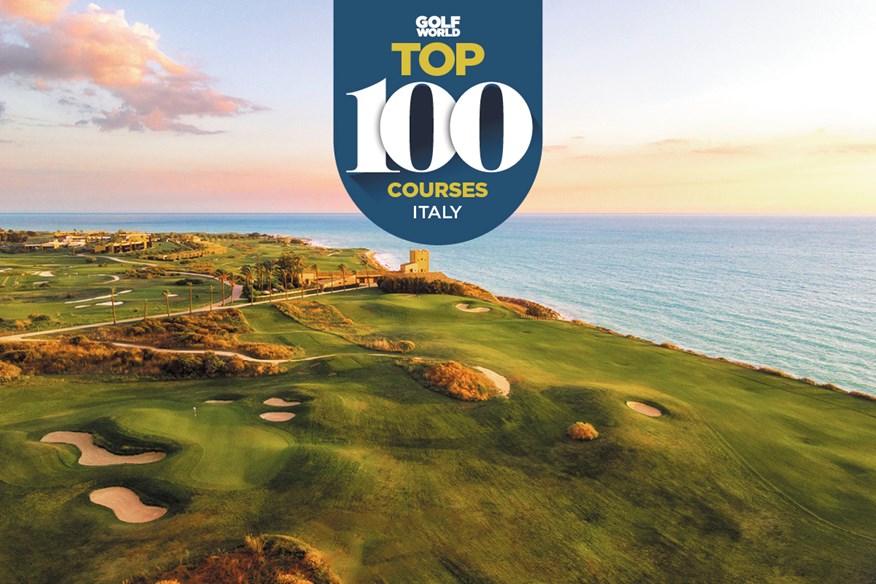Golf World Top 100: Best Golf Courses in Italy
Last updated:
The Golf World Top 100 panel heads to Italy to select the best courses in the country that will host 2023’s Ryder Cup.
But don’t be fooled into thinking that’s the reason we’ve chosen to rank the country’s courses now. It’s certainly true that Italy – and perhaps a golf holiday there – will be in the minds of golfers like never before in 2023, but it’s not why we have put together this list.
The reason is simply that ‘Bel Paese’ boasts a LOT of very good golf courses – and it’s also one of Europe’s best destinations in terms of resorts.
There are 11 courses in this 60-strong list that have been in our Continental European Top 100 and in addition to those, I would say there are at least another eight that will be in our thoughts for the continental list come 2023.
Italy has real depth and a pleasing variety to its offering. Its other appealing quality is the way the best courses are spread all over the country, but in conveniently accessible pockets. Lombardy (Milan) might lead the way, but Piedmont (Turin), Lazio (Rome) and Tuscany are exceptionally strong, too.

Like my fellow Continental European panellists, I have naturally played most of the courses at the top end of the list (and 28 of the 50 in all), but I needed some local experts to give us insight into the rest of Italy’s offering.
I could not have been more fortunate to receive insight on the whole of the country from James Massarenti, Massimo De Luca, Rainer Preissmann, Pierfrancesco De Simone and Andrea Faldella, with input on specific areas from Graham Cooke, Candido Besso and Charles North. Their breadth of knowledge is why I strongly believe this is the most accurate representation of the best golf in Italy.
Please do feed back where you feel we’re right and, more likely, where you think we’ve gone wrong. We’d love to hear from you via email, on Twitter, Facebook or Instagram.
And, once you’ve enjoyed this ranking, please do take a look at some of our others – from the best courses in Europe and the USA, to the finest golf resorts in Britain and the world, we’ve got it covered.
Chris Bertram, Golf World Top 100 Editor
NEVER MISS A TOP 100: Subscribe to Today’s Golfer here | Get Top 100 news direct to your inbox
Golf World Top 100: Best golf courses in Italy
60. Terme di Saturnia
Grosseto, Tuscany
An 18-hole Championship course that rolls over 7,000 yards of glorious Tuscan countryside.
59. St Vigil Seis
Castelrotto, Trentino
It’s all about the mountain, meadowland and forests of this incredible natural landscape.
58. Il Picciolo
Catania, Sicily
At the foot of Mount Etna, with some significant tree management it could be 20 places higher.
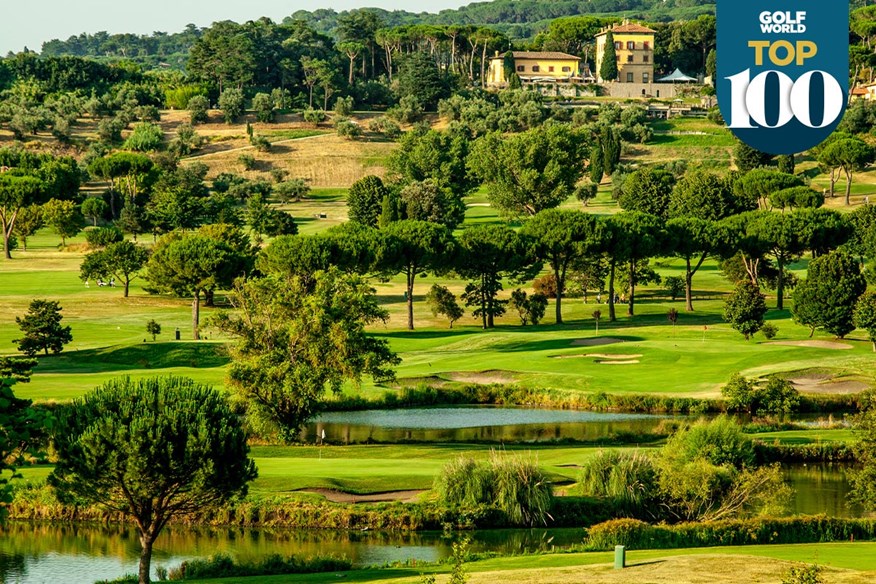
57. Castelgandolfo
Rome, Lazio
A Robert Trent Jones Snr design laid out on adventurous terrain. Three lakes, lots of low-lying trees and 93 bunkers lying in wait.
56. Margherita
Turin, Piedmont
Undulating parkland with loads of water hazards. Generous fairways as well as pacy, rolling and well-guarded greens.

55. Verona
Verona, Veneto
Contrasting front and back nines on this parkland close to Lake Garda, characterised by raised greens.
54. Acaya
Lecce, Puglia
Located in the beautiful Salento and set in a green landscape filled with olive trees. Features a breathtaking waterfall between the 11th and 12th holes.
53. Menaggio & Cadenabbia
Como, Lombardy
Created on Lake Como in 1907 by J.H. Taylor and modified in 1964 by John Harris, this is the second oldest golf club in Italy. Lush parkland with an English feel.
52. Bogliaco
Brescia, Lombardy
One of Italy’s oldest courses (1912), an English-style parkland laid out on a hill close to Lake Garda.
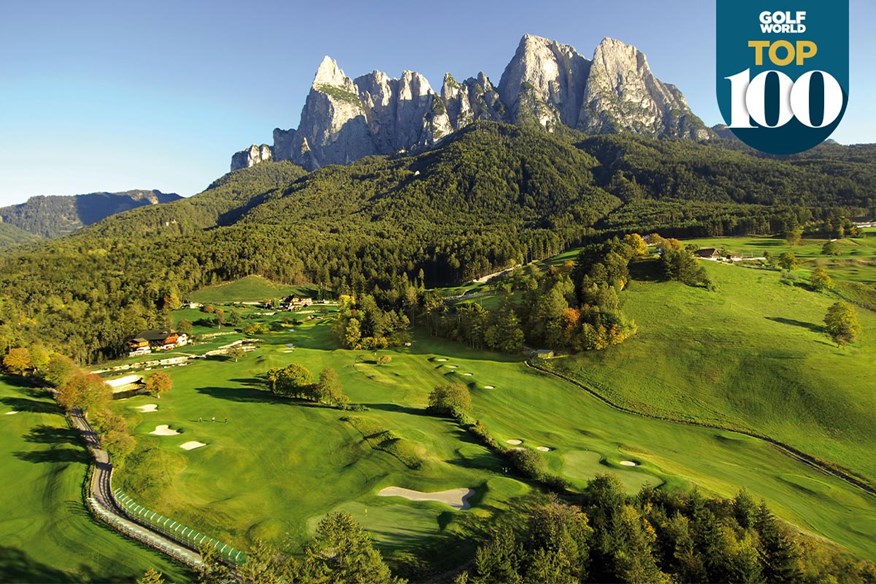
51. Dolomiti
Sarnonico, Trentino
Superb mountain/woodland golf in the Dolomites, just across the South Tyrol border on the Mendel Pass. Sensational views from every hole. Opened in 1991.
RELATED: Best Golf Courses in Continental Europe
50. Asolo
Treviso, Veneto
European Golf Design and Stan Eby laid out all three nines here, which opened in 1997. Easy-walking and plenty of water.
49. Padova
Padova, Veneto
Nice 27 holes near the gorgeous city of Padova – it received widespread plaudits from the panel.
48. Rovedine
Milan, Lombardy
Generally flat, but interesting course in decent nick. Sits in a 650,000sq ft park and has hosted both the men’s and ladies’ Italian Opens.
47. Montecchia
Padova, Veneto
Laid out in 1988 and a host of both the Challenge and Alps Tours, Montecchia sits in the estate of Conte Emo Capodilista.
46. Parco di Roma
Rome, Lazio
P.B. Dye track (2000) within Veio Park, blessed with archaeological and environmental treasures and on hilly terrain. Rome’s only course from which you can see both St Peter’s Basilica and the Vatican City.
45. Bologna
Bologna, Emilia-Romagna
Founded in 1958 in rolling countryside 116m above sea level, Bologna is not a long course (6,400 yards), but its hills and valleys are a constant source of calculation and strategy.
44. Castello Tolcinasco
Milan, Lombardy
Home to 36 Arnie holes, backdropped by a majestic 16th-century castle. Water abounds.
43. Udine
Udine, Friuli Venezia Giulia
Fairways wind over gentle hills among 7,000 alder, cherry and ancient oaks, lakes and streams keep players fully focused.
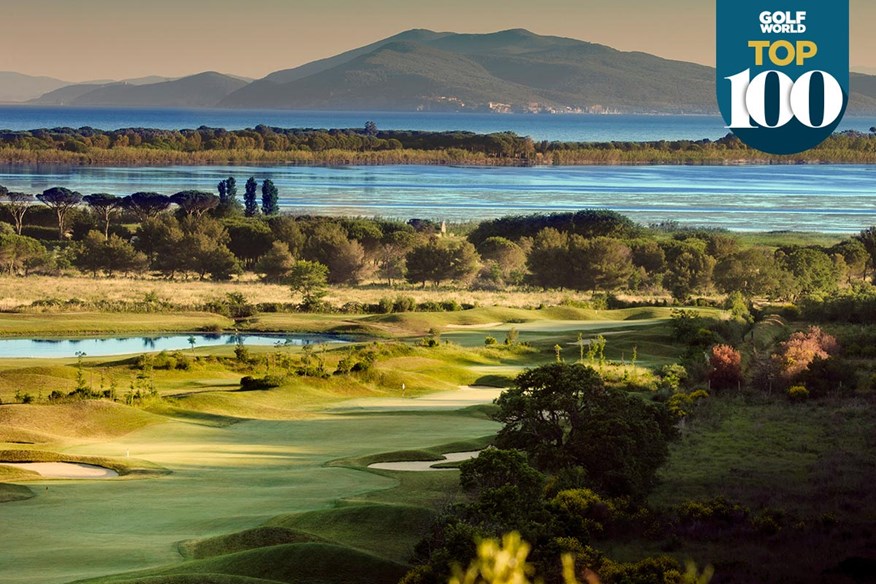
42. Argentario
Monte Argentario, Tuscany
Set down on natural terrain, so has plenty of idiosyncrasies and character. The 16th green – tiered and hard to a centuries-old tree – is one of the funkiest you’ll ever three-putt on.
41. Chervo San Vigilio
Brescia, Lombardy
Ranked here for its three main nines (Benaco, Solferino and San Martino), all designed by Kurt Rossknecht, all full of water and strategically-placed bunkers.
RELATED: Best Golf Courses in Spain
40. Pavoniere
Florence, Tuscany
Arnold Palmer’s mid-1980s work within Tavola Park asks you to carefully plot your way around a layout punctuated with bunkers and water hazards.
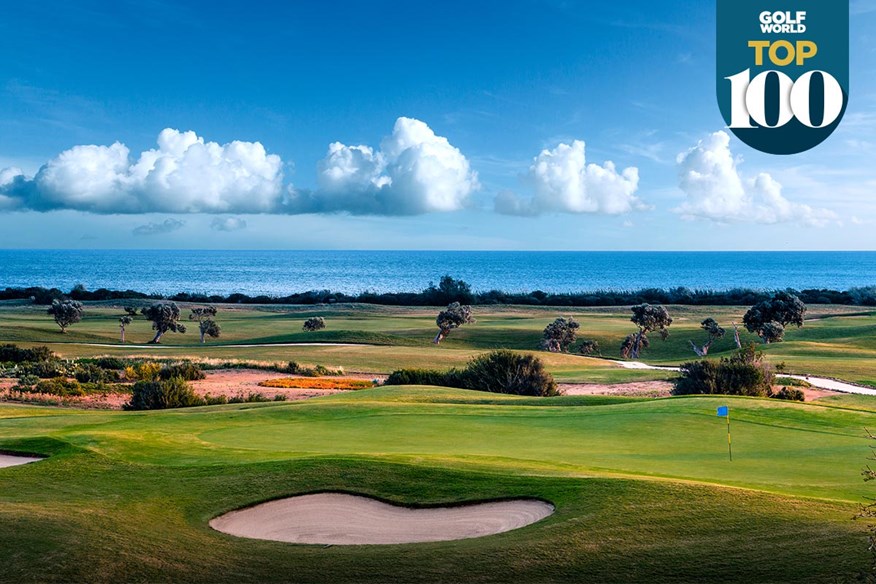
39. San Domenico
Savelletri, Puglia
World-class resort with a European Golf Design course set down on gentle slopes with fairways winding between century-old olive trees. Well-bunkered but playable and with enough movement in the greens to always keep you engaged.
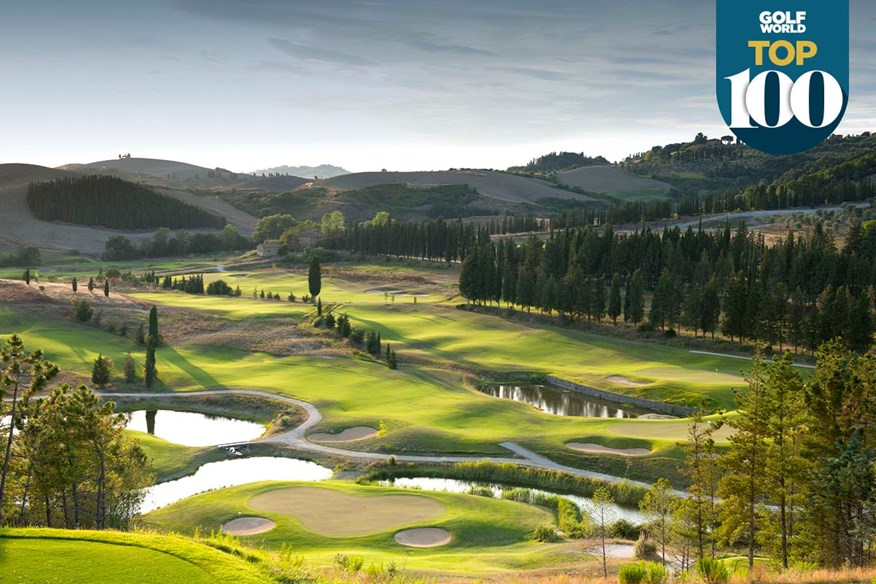
38. Castelfalfi (Mountain)
Siena, Tuscany
Aptly named, this Rainer Preissmann- Wilfried Moroder track is at times riotous fun. Some may be bewildered by the changes in elevation and the acute slopes, but most will find it endlessly entertaining. “Had the slopes been tackled better, it could have been No.1 Italy and maybe in the top 50 in Europe,” said one panellist.
37. Villa Carolina
Alessandria, Piedmont
Very nice location, and an interesting test for all levels of player. La Marchesa, by Brian Silva and Geoffrey Cornish, is backed up by Graham Cooke-designed Paradiso.
36. Franciacorta
Brescia, Lombardy
Home of three Pete Dye and Marco Croze nines (Bruit, Saten & Rose) at the heart of Lombardy wine country. A 50,000sq ft lake lies at the centre, with the 2nd on the Saten being played to an island green.
35. Is Molas
Pula, Sardinia
Opened in 1975, designed by Piero Mancinelli, Is Molas has hosted four Italian Opens. “Sooner or later an investor will buy it,” said one panellist, “and it could be a very good golf destination.”
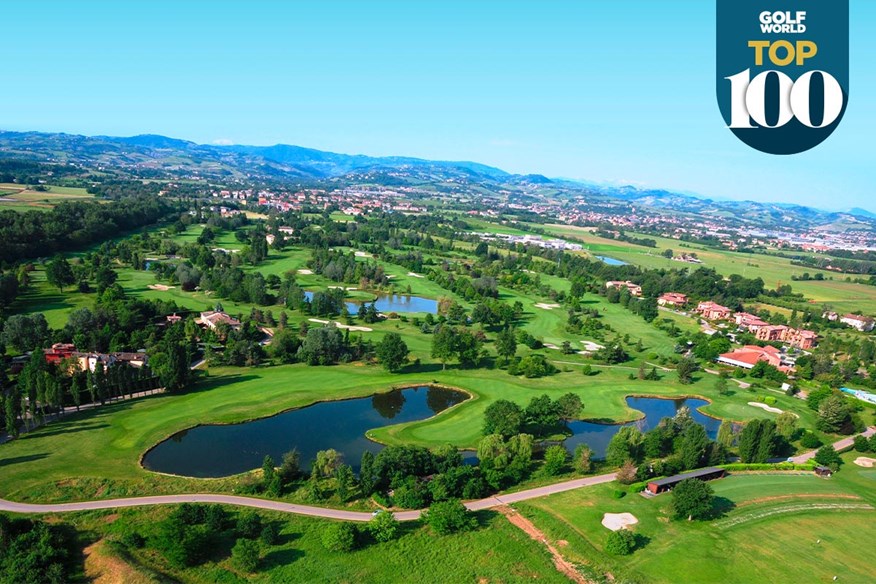
34. Modena
Modena, Emila-Romagna
Bernhard Langer creation along with US architect Jim Engh, perched 100m up the slopes of the Modena hills. Opened in 1990 and features wide fairways and big greens as well as a thrilling, risk-reward par-5 climax with two fairways to aim at.
33. Iles Borromees
Brovello-Carpugnino, Piedmont
Boasts views of the Alps and the Ticino plain, while from the 18th tee you can often see the skyline of Milan as well as lakes Maggiore, Varese, Monate and Comabbio. A delightful experience.
32. Varese
Milan, Lombardy
Founded at the back end of the 19th century, though the parkland was extended to 18 holes in the mid-1950s. Gorgeous views, none more so than of Lake Varese and the Monte Rosa mountain range from the 10th tee. Hilly and short, the clubhouse is an antique monastery.
31. Monticello
Como, Lombardy
Parkland classic 10 miles south of Lake Como in flat but exquisite parkland-woodland. Has hosted the Italian Open seven times. Originally laid out by Jim Fazio and Federica Dassu, then later extensively refurbished by Canadian architect Graham Cooke.
RELATED: Best Golf Courses in Portugal
30. Venezia
Venice, Veneto
Located on a small island near Venice, this traditional course includes some blind shots. ACK Cotton design from 1951 on a spectacular strip of land between the Adriatic Sea and the Lagoon of Venice. The Duke of Windsor, Henry Cotton, Hitler and Mussolini have all played it!
29. Carimate
Como, Lombardy
First nine by Piero Mancinelli in 1962, the second followed soon after and was updated around 1989. Naturally undulating routing that winds through more than 10,000 plants and tall trees.
28. Palazzo Arzaga (Nicklaus)
Brescia, Lombardy
There are 27 holes here (including nine by Gary Player), but the 18 by Jack Nicklaus’ firm is high-calibre resort golf. Expect an American-style layout with wide fairways lined by large jigsaw-shaped bunkers and, occasionally, lakes.
The greens are relatively flat and frequently large – and always in terrific condition. “It lost part of the original design, but it remains an entertaining round,” said one panellist.
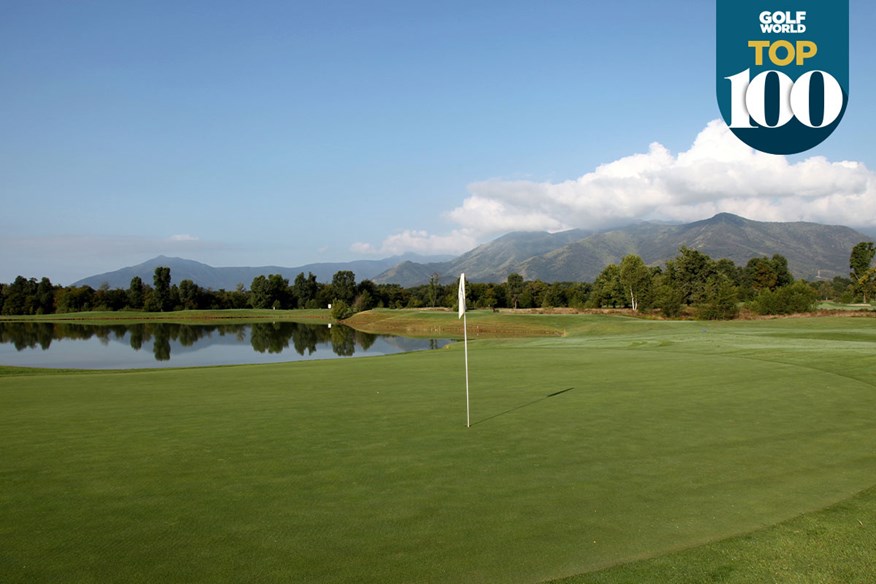
27. Royal Park (Pramerica)
Turin, Piedmont
Designed in 2006 by Michael Hurdzan and Dana Fry, who collaborated on former Major venue Erin Hills. It is as long as its sister (No.2) and often much tighter as it winds between the oak trees that give the club its nickname of ‘i Roveri’.
In addition to the woodland, you can expect ponds and bunkers to be the main hazard, as well as a stream that affects three holes.
26. Ugolino
Florence, Tuscany
Located on the edge of Chianti country, Ugolino’s course was designed by the Anglo-Irish combination of Cecil Blandford and Peter Gannon in 1934. Not especially long, but the sloping fairways and small, well-defended greens make it tricky.
“Old style, old design… wonderful location. The first time you play it can feel ‘unplayable’,” said one panellist.
25. Margara
Alessandria, Piedmont
Founded in 1972 by Dr Glauco Lolli Ghetti – the oldest of the two contrasting layouts is named after him, with the second, La Guazzetta, a links-style test, opening in 2006.
A flat site but well-shaped, it’s hosted more than 20 Challenge Tour events, the Italian Ladies Open and the Ladies European Tour.
24. Villa Paradiso
Milan, Lombardy
Under new ownership, it is the most improved Italian course in the last three years and that gets it into the top 30.
The design is good for all levels.
Plenty of water in the shape of five lakes to negotiate on this Franco Piras design, located 20 minutes from Milan and Bergamo.
23. Golf Nazionale
San Martino, Lazio
Designed by George and Jim Fazio and David Mezzacane, this modern course hosted the 1991 World Cup just a year after it opened.
It was previously known as ‘Le Querce’ (The Oaks), which reflected the fact it was cut through thick forest. A fine design in an uninspiring setting.
22. Torino (Yellow)
Turin, Piedmont
The No.2 course at this Turin club, but it’s a high-calibre parkland-woodland that takes holes from the original course, designed in 1956 by Harry Colt’s associate John Morrison, along with more recent ones by English constructor-architect John Harris, Italian Marco Croze and Canadian Graham Cooke.
21. Pevero
Porto Cervo, Sardinia
The view from the 15th is one of the best in Italy, but Pevero’s ranking suffers from a lack of playability in wind.
Located in the most spectacular part of Sardinia, Costa Smeralda, it was designed by Robert Trent Jones Snr and is surrounded by rocks, lakes and native Mediterranean bushes that give off a perfume of juniper, myrtle and wild strawberry.
RELATED: Best Golf Courses in England
20. Le Robinie
Milan, Lombardy
A Jack Nicklaus Signature design, created by moving two million cubic metres of earth and gravel to create humps and hollows, plus amphitheatre greens, deep bunkers and water hazards. Founded in the early 1990s between Olgiate and Solbiate Olona, north-west of Milan.
19. Is Arenas
Narbolia, Sardinia
Is Arenas is a high-end resort on the west coast of Sardinia in Narbolia and its course was designed by the charismatic American architect Robert von Hagge.
Surrounded by around 700 hectares of pine forest and adjacent to a sandy beach, but you cannot see the sea even though it is so close because a permit to build near it was not possible. Challenging, beautiful and varied, the par-4 17th is a classic hole in any landscape.

18. Royal La Bagnaia
Siena, Tuscany
Sits seamlessly among the archetypal rolling Tuscan hills, which Robert Trent Jones Jnr has used to good effect. In fabulous condition, the short grass is often burnt by the hot Tuscan sun, giving the course a links look.
But this is a high-class parkland, defended by bold bunkering and lakes. From the clubhouse you get a view of all 18 holes, as well as the towers of Siena.
17. Milano (Red and Yellow)
Milan, Lombardy
“Old design, but interesting – not just for long hitters. The player must have a draw and a fade in his bag,” said one panellist. Milan Golf Club was created in 1928 and the Yellow and Red loops wind through mature woods of the Royal Park of Monza, which covers almost 700 hectares and is the largest European park entirely surrounded by walls.
Both nines sit on relatively flat parkland, with the former especially tight. It has hosted numerous Italian Opens and is a grand old stalwart of Italian golf.
16. Gardagolf (Red & White)
Brescia, Lombardy
Designed in the 1980s by Donald Steel, this Italian Open host benefits from a very nice location. It is a challenging course with excellent maintenance and a very pleasant restaurant overlooking Lake Garda, which might be useful after a double bogey on the hilly 18th hole.
15. Bogogno (Del Conte)
Milan, Piedmont
Constantly changes direction as it darts about the mix of mature woodland and parkland. Unlike on sister course the Bonora, there is no need for a buggy here.
The Del Conte’s abundance of mature trees makes it feel older than its sister, too, and one of its key strengths is that it is hard to recollect any two holes looking exactly the same or demanding the same combination of shots to play them.
14. Bergamo (Blue & Yellow)
Bergamo, Lombardy
The home club of Costantino Rocca opened in 1961, the dream of Cesare Magnetti, a local industrialist made good. Magnetti thought the hill and valley terrain – populated with dense vegetation – would make for a fine site as it resembled Villa d’Este, which he had played.
You can expect superb maintenance at this Ken Cotton design in addition to elevated tee shots, clever use of the steep-sided banks, strategic incorporation of streams and an excellent set of greens. Could easily be top 10, it’s that good.
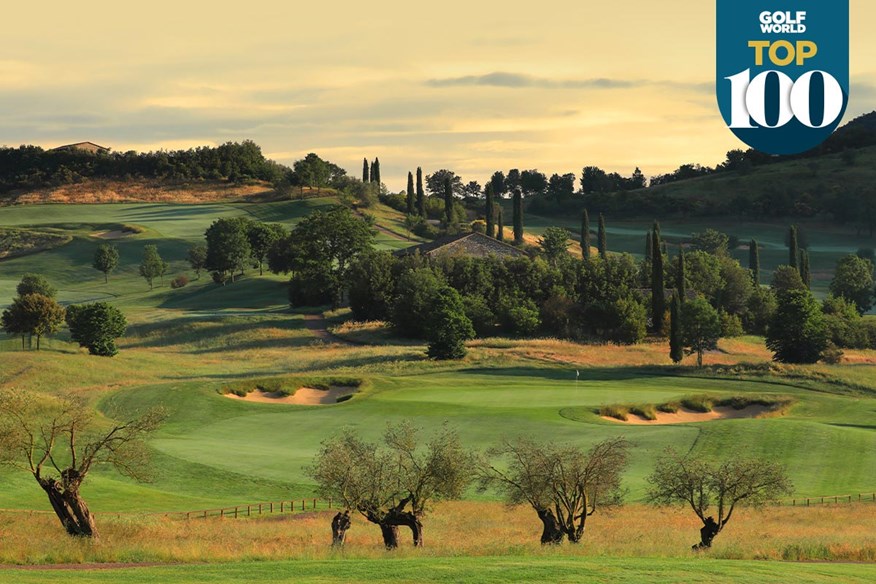
13. Antognolla
Perugia, Umbria
Finding this Robert Trent Jones Jnr course among the big hitters of Italian golf is perhaps a surprise, but we are very confident it deserves this slot. It features cliff-framed fairways, water hazards and large, undulating RTJ-style greens.
Renovated to good effect in 2018, the bunkering is magnificent. “An awesome place,” said one panellist. “Given 10 more hectares, Trent Jones could have made it a little longer and less hilly and had a European masterpiece. But I love it.”
12. Rome Acquasanta
Rome, Lazio
Established in 1903 as a nine-holer and is thus one of Italy’s most historic courses. Add in the fact it sits on Via Appia in the south east of Italy’s capital, just three miles from the Colosseum and with views of the city’s iconic sights, and you have one of the most romantic destinations for golf in Europe.
Expect a quintessential English parkland – although one decorated with pines and eucalyptus – that follows the natural undulations of the land in the old-fashioned manner. Relatively short, with Roman ruins on site, the views from the elevated holes are breathtaking.

11. Castiglion del Bosco
Siena, Tuscany
This Tom Weiskopf design in Tuscany is one of Europe’s most exclusive clubs, one blessed with a delightful location and benefiting from five-star maintenance.
The former Open champion has routed this high-calibre course beautifully in archetypal Tuscan landscape, giving the impression it has been there for decades, rather than the 11 years of its existence.
It is aesthetically pleasing but it is also a serious challenge, being protected by stylish bunkering, tall fescue that lines the fairways or a handful of astutely placed water hazards.
RELATED: Best Golf Courses in France
10. Olgiata (West)
Rome, Lazio
A 1961 design by Ken Cotton on stately land in the north east of Rome. Host of the Italian Open in 2002, before American Jim Fazio renovated it a decade later.
Holes are arranged in numerous dog-legs through mature woodland, as well as several more classic parkland phases.
There are moments to admire on both nines, but more character within the back nine’s topography. Three stood out for us: the S-shaped, par-4 13th, the short, water-protected 14th, then the downhill 17th.
9. Torino (Blue)
Turin, Piedmont
There are two courses at Torino, both of which use holes created in 1956 by Harry Colt’s associate, John Morrison.
English constructor-architect John Harris as well as Italian Marco Croze and Canadian Graham Cooke added 18 more holes, nine at a time, to leave Torino with two full-size courses of high calibre.
The Yellow also features in this ranking but the Blue is the premier layout, being a candidate for our continental Top 100 as well as prominent in our Italian top 10.
8. Castelconturbia
Milan, Lombardy
Castelconturbia boasts three Robert Trent Jones Jnr-designed loops and shares much of the same qualities of big, bold greens and big, bold bunkering as its near neighbour, Bogogno.
There is also noteworthy subtlety to the green complexes and, as a result, a varied creative element when your approaches miss the target. Situated close to Malpensa airport, the movement in the greens and deep bunkering make it a serious all-round, short-game examination.
7. Bogogno (Bonora)
Milan, Lombardy
This is a proper 36-hole venue, because it is very difficult to split the two courses, with no feeling of one being an afterthought.
We actually flit between the Bonora and the Del Conte as our favourite but settle firmly on the former here. Both offer a stern test, as one has come to expect from a course designed by Robert Von Hagge and his associate Rick Baril, an American with great affection for his creations here.

6. Marco Simone
Rome, Lazio
The host for next year’s Ryder Cup ranks high here having never threatened the Continental European Top 100. Why? Because it has been totally remodelled by European Golf Design as a prerequisite of it hosting the biennial event.
The original design was by Jim Fazio and David Mezzacane and it hosted the 1994 Italian Open, but in order to become Italy’s first Ryder Cup venue, Marco Simone had to totally renovate its course.
Dave Sampson, of EGD, was entrusted with the task and it received praise from our panel. The site is hilly (which will make it a good viewing course for spectators), but generally worked well and while it is hardly Verdura or Castelfalfi
on the eye, there is a pleasing tranquillity given it is just 30 minutes from Rome.
The greens are difficult – perhaps too exacting for the average player – but it is hard to design greens that fit Ryder Cup needs and 24-handicap players.
The climax received widespread praise. The 14th and 15th are back-to-back high-class two-shotters that will test even Rory, Dustin and Co, the 16th can be turned into a risk-reward fun, drivable par 4, the 17th is the course’s best par 3 and the last is a par 5 that guarantees a dramatic conclusion.
“Terrific renovation, the course is now up to the highest of the industry standards,” enthused one panellist.
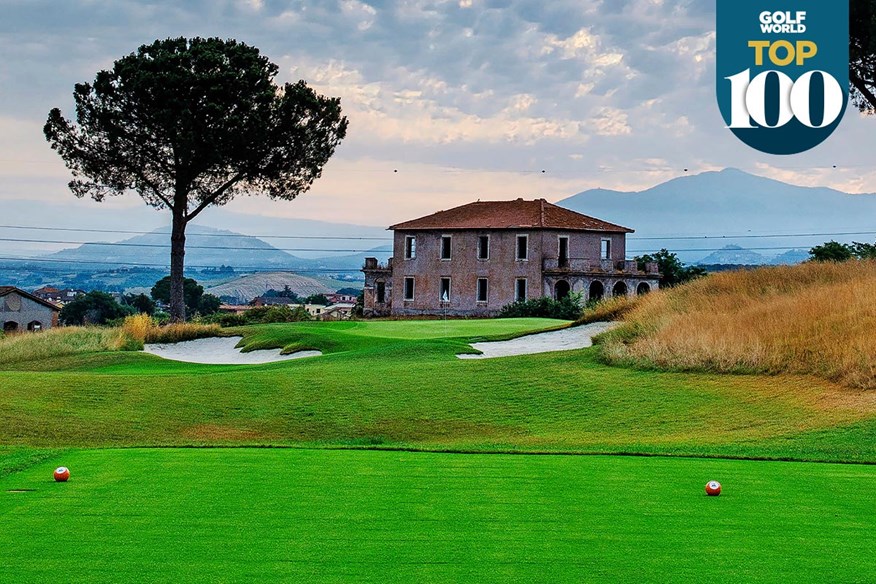
Creating a Ryder Cup course – by Marco Simone architect Dave Sampson
How exciting was it to be given the job – and was there extra pressure on it?
Very exciting! I still feel very fortunate and honoured to have been given that responsibility. It really feels like one of those ‘once in a career’ opportunities. And there was definitely more pressure! You question and analyse every decision more. Not everyone will understand why certain things are ‘how they are’, but I am confident we’ve created a course that will be memorable and packed with drama.
What were your first impressions of the course/site when you saw it?
Potential. From the beginning, I had been briefed that not much of the existing course was going to be retained, so I was always treating the site as pretty much a blank canvas. None of the original course now remains – the only playing corridor we retained was the new 6th hole, previously the 8th. The initial surprise was the amount of elevation change across the site, which presented a lot of potential for both the holes and spectators. The captivating long-distance views over Rome, with the standout building being St Peter’s Basilica, played a key role in the routing, as well as the most dramatic holes towards the end of the round. The back nine is packed with risk-reward holes.
Has the emphasis been entirely on building a course for the Ryder Cup?
I wouldn’t say 100 percent, but unlike a normal ‘new’ site, on this project you are not only trying to find the best 18 holes the land has to offer, but also the best 18 holes for spectators, as well as factoring
in all the additional space for hospitality units and a significant road network.
I’ve always been conscious this is still a members’ golf club, so making sure the course is still playable and fun for them is important. However, the course’s layout and the holes themselves have definitely been designed with matchplay in mind.

What were the biggest challenges?
Because Marco Simone is a members’ club at heart, the club wanted to make sure there were always 18 holes available – the previous layout had 27 holes, so we shut nine down at a time. This led us to building the new course and related infrastructure over four phases.
Aside from phasing plans, throw in some archaeology restrictions (this is Rome!), major gas pipelines, rerouting of high voltage electric lines and their pylons, then the Covid pandemic, and it’s fair to say there has been the odd challenge along the way.
Did you lean on EGD colleague Ross McMurray at all for his experience with Celtic Manor’s Twenty Ten?
Yes, Ross and I would chat often, but the Ryder Cup has grown exponentially since 2010. Concepts are similar, but the required amount of space to put on this event is now much larger. The particular person at EGD who has played a vital part throughout this entire process has been our MD, Jeremy Slessor.
Can you pick out three key holes?
I’d go for the 12th (below), a 557-yard par 5 which comes in the middle of the easiest stretch of holes. The tee occupies the highest point on the course so has views over Rome, and the tee shot asks for a draw to make the most of the natural contours. Players might hit 8 or 9-irons in, if they’ve hit the ‘perfect’ tee shot. A real risk-reward hole.
Then I’ll choose 15 (left) and 16. They come at arguably the most crucial part of Ryder Cup matches. Both are par 4s, yet both are entirely different.
The 15th is a 438-yard par 4. Its downhill tee shot is one of my favourites. It favours a fade, to probably the narrowest landing area on the course. A good drive will leave an uphill second shot with anything from a 6 to an 8-iron to the raised green site enclosed with amphitheatric mounding around the back and sides. Par is a great score.
And the 16th offers the very best views of Rome. It’s a 365-yard par 4 and a very drivable, risk-reward downhill with multiple options off the tee. You play to a green set 25 metres below and protected by water down its right and with bunkers to the front and left. The player can lay-up short of the central fairway bunker to leave a wedge in. They can take on the central bunker but finish short of the stream which crosses the fairway, leaving an 80-yard flick in. Or they can try to thread the ball onto the green through the front-left opening. It will be fascinating to see how it gets played.
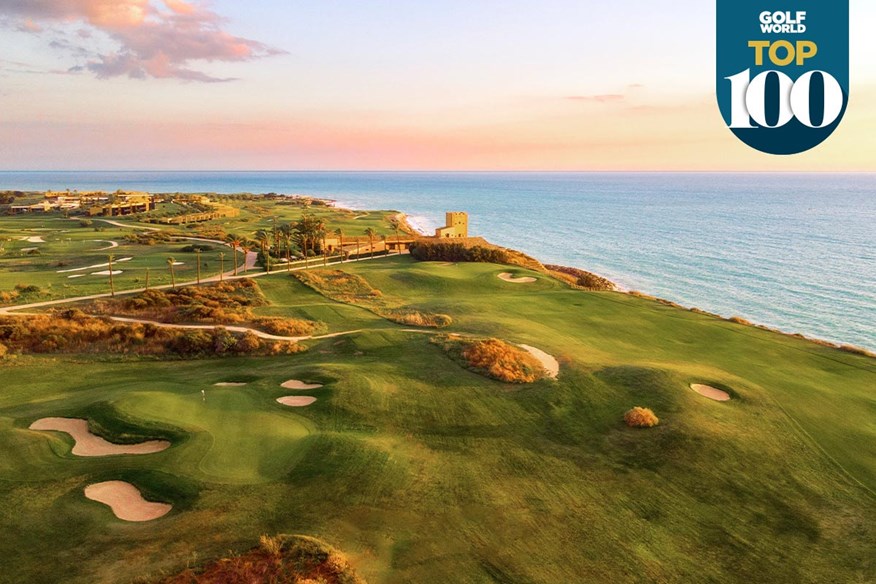
5. Verdura (West)
Sciacca, Sicily
After Verdura’s revamp, this is now pretty much the old composite course for the Sicilian Open and a worthy test – especially if you are a good player and a long hitter.
It runs out in a clockwise loop away from the clubhouse area, returning by the 11th. There is then a scenic par 3 by the sea, the par-4 13th away from the clubhouse, then a long par 4 back right alongside the sea. A couple more seaside holes give you a lot of aesthetic pleasure, whereas originally these holes were split between the two courses. Less forgiving than the East, but a wonderful No.2.
4. Biella
Turin, Piedmont
Simply getting here is a charming journey. You swap the fast straights of the A4 that links Milan and Turin for the chicanes of side roads in an alpine-esque arrival. The hustle and bustle of Turin seems a world away and the views are staggeringly good.
Known as ‘Le Betulle’, which translates into English as ‘The Birches’, which very accurately informs you a lot about one of Italy’s oldest courses.
Biella was laid out by Harry Colt’s associate J.S.F. Morrison from 1956 and while some tree management would be very welcome – with the pines, beech and, of course, silver birch varying in how much they affect the play – it remains one of the continent’s finest courses. Has the potential to be higher.
3. Royal Park (Trent Jones Snr)
Turin, Piedmont
This is no ordinary golf club, owned by the Agnelli family of Fiat and Juventus fame, so its privacy and calibre need not be laboured. And yet, they are perfectly happy to welcome overseas golfers – and for a reasonable green fee. In many other countries, the Trent Jones course would cost double and more, so if you enjoy modern Championship courses in immaculate condition, prioritise it now.
Designed by RTJ Snr in 1972, only four greens are not influenced to some extent by water. If it is not in front, it will be by the side – and it is usually in the form of a gurgling stream to make the danger seem even more evident.
The club is known as ‘i Roveri’, a type of oak tree, which very much reveals its character.
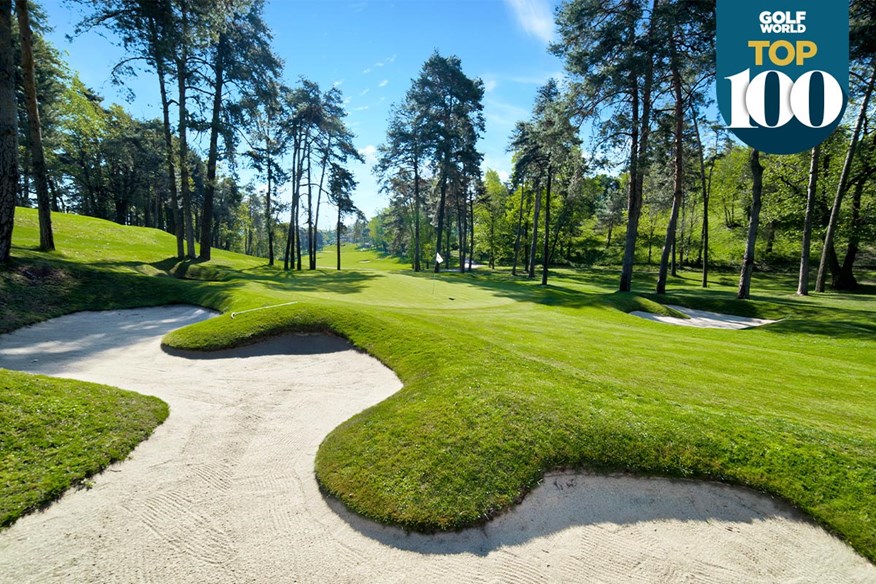
2. Villa d’Este
Milan, Lombardy
For those who savour the architecture of yesteryear, Villa d’Este is truly an outstanding prospect.
Its location overlooking the beautiful Lake Montorfano – it sits on the same level as the villas you see wedged into the hillside when you are in the iconic town of Como – is entirely fitting and would, on its own, be enough to make the course an enticing proposition.
But the joy of Villa d’Este is in charismatic Englishman Peter Gannon’s cerebral design that asks questions of your nous and your finesse, rather than your daring and your brawn.
Gannon has a fascinating backstory. He was born in 1874 in Argentina, the ninth child of Offaly man Patrick Gannon.
In 1901 he was ordained as a priest, but was sufficiently skilled at his other love, golf, to be runner-up in the 1908 South of Ireland championship.
He won Austria’s national title the following year and was invited by the Karlovy Vary club to redesign their Old course. French and Italian titles followed and by 1913 he was married and living in Switzerland.
His design work there brought him to the attention of neighbouring northern Italy. So, in addition to Villa d’Este, he also designed George Clooney’s home course of Menaggio (1923) and Milano (1928).
His work at our No.2 has left a course that feels a bit like the pine-lined, green baize fairways of Woburn Duchess’, merged with the awkward natural landforms – the ridges, mounds and hollows – of Huntercombe. There is a hint of the raunchy terrain of St George’s Hill too, as the routing rises and falls over a rolling, serene landscape.
Old style, full of charm and not just for long hitters, you need to be prepared to use all 14 clubs and deal with stances that are often far from flat.
Built in 1926, Villa d’Este offers sporty par 4s, beguiling short holes and inviting par 5s in its 6,300 yards. But, as ever with such enjoyably quaint courses, it is not about numbers and all about character.
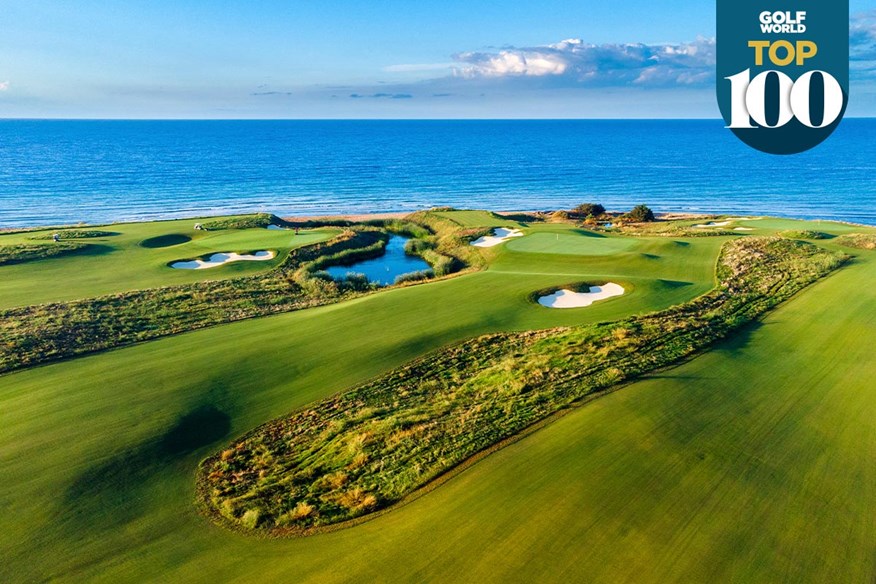
1. Verdura (East)
Sciacca, Sicily
Our first Italian No.1 represents the most significant change from the order of Italy’s entries in our 2021 Continental European Top 100.
In addition to a more comprehensive Italian panel, there is another reason for the East to jump to No.1, when it wasn’t even the top course in its own resort a year ago; following a landslide due to freak weather in late 2018, Kyle Phillips returned to Sicily to rework both the East and the West.
Whereas before we would readily acknowledge there was little to choose between the courses, and indeed had ranked them in different orders in our continental list, we are now absolutely certain that the East is the best. And indeed the best in Italy.
Originally the two were a bit like Walton Heath, with all the holes intertwined, to such an extent that the Sicilian Open combination course compromised nine holes from each. After the flood, the holes are largely in similar positions but the combination course, relatively unscathed by the weather, has become the West. The remaining holes, remodelled significantly and for the better, have now become the East.
This also has the advantage that the two courses are more physically separate, and with different characters. The West is like Walton Heath’s Old; muscular and masculine, the East a little more subtle.
The East is actually a little longer than the West, yet feels more forgiving and is more fun. That might be because of the mix of holes; the West has three par 5s and five par 3s, whereas the East has four par 5s (generally shorter than on its sister) and three par 3s. The average length of the par 4s is 400 yards+ on the West and 370 yards on the East. Quite a difference.
The East starts with a clockwise loop down to the south-east corner of the property with the first five holes. Then comes the spectacular 6th, a dog-leg over water with the sea as a backdrop. You then play in an anticlockwise loop that brings you back to the 12th, which runs alongside the 5th and takes you back to the sea for a shortish par 3.
The East has its dramatic moments, but it is its overall consistency and fun that really impress. Italy’s first No.1 for good reason.
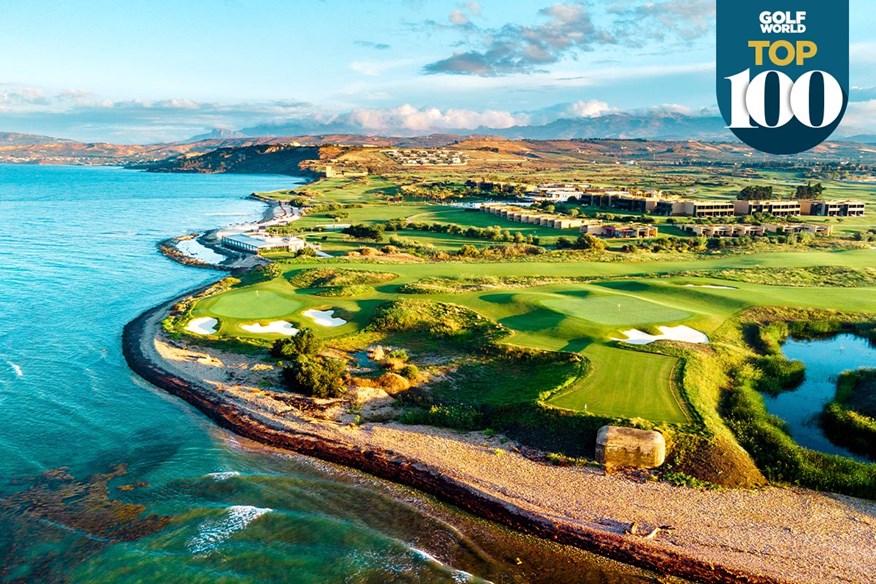
Returning to Verdura: Kyle Phillips on reworking the East course
We have certainly made the most of the terrain available to us at Verdura. The drama of the coastline has been improved and we’re proud of what has been achieved. It is new and fresh, the result is great and I think it will be really well received. It has definitely reached the level we were striving for.
One of the big differences is with the routing. With the previous layout, you would cross the other course and they would weave through each other a little at times. Now they are more clearly defined.
The East now starts near the practice range on an existing hole, has 14 new holes in between and finishes on three existing holes back to the clubhouse. This makes the East a par 73 and the West a par 70.
They are both good challenges. Naturally, with any new course, it takes time to take shape and we expect it to keep getting better throughout 2022.
The intertwined nature of the layout of the 36-hole course required that the course remained intact, but there were significant adjustments to the specific design of each hole, the most pronounced areas being the adjustments made along the sea. These were made to utilise and blend sympathetically to the new landforms along the coastline.
Players returning to Verdura will most likely notice the changes that have occurred along the coast and how we
have incorporated the new coastline, which will add to the drama and the pleasure of the course. They will also appreciate effectively playing a new course, with new greens surfaces, freshened bunkers and new turfgrass in the fairways and roughs.
READ NEXT: Best Golf Courses in the World
-
 The Golf World Top 100 panel has chosen the best golf courses in Italy.
The Golf World Top 100 panel has chosen the best golf courses in Italy.
-
 Antognolla should be on any golfer's list when visiting Italy.
Antognolla should be on any golfer's list when visiting Italy.
-
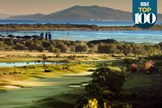 Argentario is a stunning golf course in Tuscany.
Argentario is a stunning golf course in Tuscany.
-
 Verdura's East course is one of the best golf courses in Europe
Verdura's East course is one of the best golf courses in Europe
-
 Castelfalfi is a must-play if you're heading to Tuscany.
Castelfalfi is a must-play if you're heading to Tuscany.
-
 Castelgandolfo is one of the best golf courses in Italy.
Castelgandolfo is one of the best golf courses in Italy.
-
 Castiglion del Bosco is a superb golf course in Tuscany.
Castiglion del Bosco is a superb golf course in Tuscany.
-
 Castiglion del Bosco is one of the best golf resorts in Europe
Castiglion del Bosco is one of the best golf resorts in Europe
-
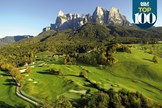 The breathtaking Dolomiti lives long in the memory.
The breathtaking Dolomiti lives long in the memory.
-
 Marco Simone will host the 2023 Ryder cup.
Marco Simone will host the 2023 Ryder cup.
-
 Marco Simone will host the 2023 Ryder Cup.
Marco Simone will host the 2023 Ryder Cup.
-
 macintyre
macintyre
-
 Marco Simone will host the 2023 Ryder Cup.
Marco Simone will host the 2023 Ryder Cup.
-
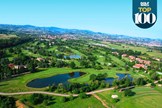 Modena is a Bernhard Langer creation.
Modena is a Bernhard Langer creation.
-
 Royal La Bagnaia is one of the best golf clubs in Italy.
Royal La Bagnaia is one of the best golf clubs in Italy.
-
 Royal Park Pramerica.
Royal Park Pramerica.
-
 San Domenico is among Italy's best golf courses.
San Domenico is among Italy's best golf courses.
-
 Verdura is a stunning golf resort with two Top 100 courses – East and West.
Verdura is a stunning golf resort with two Top 100 courses – East and West.
-
 Verdura's West course is one of the top five courses in Italy.
Verdura's West course is one of the top five courses in Italy.
-
 Verona is among the best golf courses in Italy.
Verona is among the best golf courses in Italy.
-
 Villa d'Este is among Italy's finest golf courses.
Villa d'Este is among Italy's finest golf courses.
